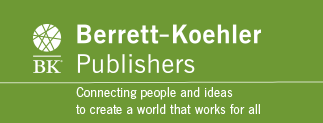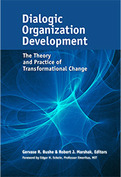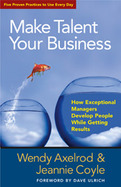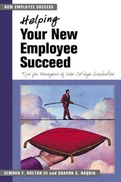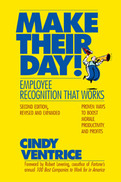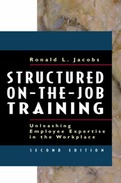For years, companies have trumpeted employee engagement as the lifeblood of success, weaving grand promises of thriving workplaces and soaring performance. Yet, Gallup’s data shatters this façade: a mere 30 percent of US workers and 21 percent globally are engaged today, dismal figures essentially unchanged for over a decade. This rather damning reality exposes a commitment not just half-hearted but utterly disingenuous. Perfunctory surveys, dusted off once or twice a year, vanish into the void, sparking no meaningful change, while ineffective or toxic managers sidestep accountability with ease. The fallout is a workforce drowning in disillusionment, tethered to a metric that’s broken beyond repair. In The Power of Employee Well-Being, Mark C. Crowley unveils a revolutionary vision, proving well-being ignites fierce commitment, unleashes boundless productivity, and forges workplaces where people and profits thrive.
Why Well-Being Matters
Drawing on a University of Oxford study of 17 million workers, Crowley urges leaders to abandon flawed engagement metrics and champion well-being. Far from a soft idea, it drives results. Gallup, Harvard, and London School of Economics studies show organizations prioritizing well-being gain 27 percent higher profitability, lower turnover, and better customer satisfaction. Yet, with three-quarters of US professionals facing burnout and a 74 percent surge in mental health–related leave (2023–2024), the crisis is urgent. Crowley highlights belonging—feeling valued, respected, and connected—as well-being’s core, yet 94 percent of leaders overlook this vital driver.
A Practical Roadmap
Building on his trailblazing book Lead from the Heart, Crowley delivers a concise, actionable guide for busy managers to cultivate well-being and unlock team potential. Through practical strategies, he equips leaders to meet workers’ core needs: caring leadership, manageable workloads, emotional support, growth opportunities, and fair treatment. Unlike hollow wellness programs, debunked by Oxford research, Crowley’s methods reshape daily team experiences. His insights, forged over decades as a leader and researcher, are anchored by formidable data, including a British Telecom study linking well-being to higher sales and customer satisfaction.
A Leadership Revolution
With a foreword by Dr. Marshall Goldsmith, a four-time New York Times bestselling author, The Power of Employee Well-Being is a clarion call to reject superficial fixes and ignite a leadership revolution. Crowley brilliantly distills complex ideas into a vital guide for busy managers. With 52 percent of workers willing to take a 20 percent pay cut for better well-being, stakes are high. This is the essential playbook for leaders to build thriving workplaces where retention soars and teams excel.
Dialogic Organization Development is a compelling alternative to the classical action research approach to planned change. Organizations are seen as fluid, socially constructed realities that are continuously created through conversations and images. Leaders and consultants can help foster change by encouraging disruptions to taken-for-granted ways of thinking and acting and the use of generative images to stimulate new organizational conversations and narratives. This book offers the first comprehensive introduction to Dialogic Organization Development with chapters by a global team of leading scholar-practitioners addressing both theoretical foundations and specific practices.
Shows how managers can develop the talents of their employees naturally, efficiently and effectively.
-
Shows how managers can readily embed talent development into their day, going well beyond the usual coaching and training programs--an incredible complement to talent management systems
-
Offers five exceptional development practices derived from research with managers and professionals at twenty-eight companies
-
Filled with real examples and easily accessible advice
Most organizations report that talent is the key to their success. Yet they struggle mightily to develop their workforce. McKinsey's ten-year follow-up to its famous "War for Talent" concluded that heavy instruments in talent managements processes have been "insufficient, superficial, and wasteful." Managers consistently say they don't feel they have the time or skills to do the job. Even if they want to develop their people--they are overloaded just meeting their numbers.
Some managers, however, are able to deliver business results and develop their people in significant ways. Wendy Axelrod and Jeannie Coyle studied these "Exceptional Development Managers" in companies like Adidas, Microsoft, Siemens, Merck, Corning, and Kraft. The authors uncovered five practices these managers shared. Without fail they integrated development into day-to-day work, rather than making it a separate event. They leveraged the importance of emotions and trust in making work more developmental. They helped their staff find the right development partners. They taught their people how to increase their impact by navigating organizational politics. And they infused their departments' environment with abundant development opportunities. In all, these managers' efforts were deliberate, resourceful, and continuous.
Axelrod and Coyle offer a wealth of real-life examples and specific techniques to help readers apply these practices for themselves. Working in this way not only pays huge dividends for managers' employees and organizations--it makes the manager's job far richer and more rewarding.
Helping Your New Employee Succeed Part Two of a three-part series of a series of practical guidebooks on work transitions. These new books guide new hires-and their managers-step by step through the "breaking-in" process that is absolutely essential for helping new employees thrive. It is relatively easy to get new hires to be competent to perform the basic tasks they were hired to do. But success on the job is due to much more than that. It comes from understanding how the organization really works-the unique aspects of how things get done in that particular organization. And it comes from learning how to "fit in"-knowing how to get accepted, get respected, and earn credibility.
The three books in the series are:
How to Succeed in Your First Job: Tips for New College Graduates
Helping Your New Employee Succeed: Tips for Managers of New College Graduates
So, You're New Again: How to Succeed When You Change Jobs
Built around author Ed Holton's dynamic 12-step process-extensively field-tested and firmly grounded in research-these three volumes give new college graduates and their supervisors, as well as seasoned professionals who've changed jobs, essential insights and tools for mastering a variety of transition challenges.
Given the high costs associated with new employee turnover, no organization can afford to leave the new employee assimilation process to chance. Corporate human resources directors, managers of new employees, individual employees making job transitions, and career counselors alike will find powerful and practical new ideas and tools in these essential handbooks.
- Show supervisors how to improve retention by helping new hires become effective members of the organization, not just perform the specific tasks they were hired to do
- Uses a dynamic, field-tested, easy-to-follow 12-step process
2009
This second edition features new examples from innovative companies like Best Buy, Cisco Systems and Google, as well as detailing how to provide recognition in increasingly virtual workplaces, account for cultural differences in reward preferences, and ensure that rewards are perceived as fair and equitable.
This revised and expanded edition of a classic text provides a comprehensive guide to understanding, developing, and using structured on-the-job training in a variety of training situations and organizational contexts. Jacobs defines S-OJT and provides a rationale based on the need to develop high levels of employee competence, or expertise, in the workplace. He then describes a six-step process used to design and implement S-OJT programs. The emphasis here is how S-OJT can be used for managerial training, technical training, and awareness training. The chapters in the final section describe how S-OJT has been used to achieve organizational and societal goals. Included in this section are discussions regarding S-OJT as an organizational change strategy, quality management, cross-cultural aspects, and workforce development.
